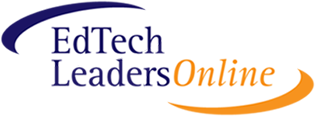| Course Structure |
Description |
| Content Organization |
The content is divided into a series of sessions, units, or lessons with topics that flow in a logical sequence. |
| Session Organization |
Each course session (unit or lesson) provides a well-designed unit of content that has internal consistency (from session to session) among design elements. |
| Main Page |
Course home page contains:
- an attractive banner or other media that clearly states the title and other relevant information about the course
- easy access to course announcements, assignments and discussion board
|
| Navigation |
Course navigation is intuitive and concise.
Navigation design ensures that:
- participants can easily locate course content and tools
- accessibility requirements are met
|
| Design Elements |
Course design is structured to follow a consistent format that guides the reader through the content.
Course is structured so that:
- multimedia is used as appropriate to deliver content
- color, graphics or icons are appropriately used to guide the reader through the content and/or to highlight key course content
- design elements meet accessibility requirements
- content presentation is flexible to meet individual learning needs of participants
|
| Interactivity |
Course design includes a variety of opportunities for interaction between students and other students, between students and the course content, and between students and the instructor.
Learning activities designed to support interactivity may include one or more of the following:
- synchronous chat sessions
- threaded discussions
- whiteboard activities
- group projects
- private email with course instructor
- applets or other forms of interactive media
|
| Course Content |
Description |
|
The course overview provides motivation by highlighting the importance of the content to participants’ daily work.
The course includes an overview which describes:
- the audience
- the scope of the course content
- key websites, tools, resources, readings if they play a central organizing role in the course
- a final product or other activity that is central to the course content and requirements
|
| Goals |
The course content is organized around goals which:
- clearly state the purpose and intent of the course
- establish what participants will know or be able to do at the end of the course
- address important and worthwhile concepts or skills
- are aligned to relevant content, technology or other standards
- are realistic and achievable
|
| Course Requirements |
The course requirements are clearly described and are accessible throughout the duration of the course.
Course requirements specify:
- time (e.g. hourly) participation expectations
- online discussion expectations
- face-to-face and/or synchronous chat expectations
- survey, exam, and/or final product expectations
|
| Session Introduction |
Sessions (units or lessons) include an introduction that briefly describes the content of the session including learning goals, objectives and session activities. |
| Readings/Resources |
Course readings and resources provide opportunities for participants to gain additional knowledge related to attainment of course and session goals.
Readings and resources:
- may be introduced with commentary that guides participants' use of materials
- include titles, sources and URLs
- are appropriate for the audience
- comply with copyright regulations, laws and guidelines
- are produced by reliable, reputable sources
- include a variety of multimedia formats
- are free from advertisements or other distracting content
- are compliant with accessibility guidelines for all learners
- are aligned with course participation and time expectations
|
| Activities |
Course activities provide opportunities to gain new learning and understanding of important concepts related to course or session goals through practicing new skills, implementing new concepts in the classroom, exploring interactive or multimedia materials, and/or completing other types of online or off-line investigations.
Course activities:
- are introduced with clear directions
- match course participation and time expectations
- engage participants in interactive, hands-on learning
- include a variety of multimedia formats
- are challenging and worthwhile
- are presented in formats that are accessible to all learners
- relate to the session’s goals and readings
- build towards a final course product
- include opportunities for ongoing assessment
|
| Discussion |
Discussion questions are generally limited to one provocative question per session enabling participants to have a common point of reference for meaningful dialogue.
Discussion questions:
- relate to course and session goals
- are open-ended and provide opportunities for divergent thinking
- offer opportunities to reflect on readings, resources and activities
- offer opportunities for community-building and for feedback from the facilitator and other participants
- include a variety of question formats such as case studies, scenarios, and debate
|
| Assessment |
Participant understanding of course material is assessed on a regular basis and includes timely feedback from the instructor.
Overall course assessment:
- is consistent with course goals
- is representative of the scope of the course
- includes a variety of formats
- includes online discussion participation (where relevant)
- is clearly stated at the beginning of the course
- includes requirements relevant to classroom, school, district, state or administratively-based practice
|

